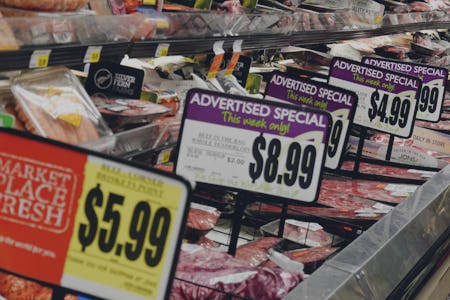Inflation Continues To Rise — But For Some, It Isn't All Bad News
August’s inflation report is out. Here are 6 takeaways that parents need to know.

The August Consumer Price Index (CPI) was released yesterday, and although there was some good news, overall the economic picture remains cloudy for Americans just trying to make ends meet.
The CPI is an index that tracks the prices of a number of goods and services — from, say, the cost of groceries to the cost of gasoline and rent — measuring fluctuations and crunching numbers to determine the rate of inflation. The index is released monthly, and in the wake of record-high inflation, has gotten more attention in recent months than is typical of more economically “stable” years.
Yesterday’s report shows that prices are dropping in a few sectors but increasing in others. Inflation did raise slightly over July, by 0.1%, and though that doesn’t sound like much, in the big picture it’s important to remember that year over year, the overall rate of increase in inflation is 8.3% from August 2021. Here’s what you need to know.
1. Energy Prices Are Down
Gas prices dropped significantly in August — down from an average of $5.01 earlier this summer to $3.72 this week, a drop of over 10%, according to AAA.
The cost of fuel oil also decreased in August, but these decreases don’t mean the costs for energy as a whole have decreased.
Energy services, like those used to power your local electrical grid, increased by 1.5% in August, an almost 16% increase over the last 12 months.
2. Housing and Vehicle Costs Increased
After a series of rate increases by the Federal Reserve intended to decrease borrowing and therefore demand, the costs for housing and new vehicles continued to increase throughout August — housing at a rate of 0.7%, an increase of 0.2% from July, and new vehicles at a rate of 0.8%, up from 0.6% in July.
The Fed is scheduled to meet again soon to discuss another interest rate increase to further limit borrowing.
3. Food and Clothing Prices Continue to Climb
The cost of food increased by 0.8% in August, culminating in an 11.4% increase from 2021. The silver lining? The 0.8% increase is the smallest increase since the beginning of 2022, which could indicate that food costs are beginning to plateau.
Clothing prices, after a slight dip in July, climbed 0.2% last month for a total increase of 5.1% since 2021.
4. For Some, Wages Are Increasing
Workers in at least eight states can expect a minimum wage increase in January 2023 based on the August-to-August CPI inflation numbers. Because inflation did not decrease as much as analysts expected in August, employees in Arizona, Minnesota, Maine, Montana, Ohio, South Dakota, Vermont, and Washington should get a cost of living bump to the state-mandated minimum wage rate.
5. But Not For Everyone, And Likely Not Enough
Washington Post economist Heather Long tweeted: “Average hourly pay in America **adjusted for inflation** [sic] is -2.8% in the past year. Inflation has been eating up wage gains since April 2021 and shows little sign of significant easing.”
6. Social Security Payments Will See Biggest Increase in 40+ Years
Although the state of inflation may seem dire, there is good news on the horizon for Americans who receive Social Security (SS). The average SS payout fluctuates yearly based on the rate of inflation. After several years of a relatively stable economy, SS payments haven’t changed much recently.
This year, however, SS recipients can expect the highest increase in 40 years. Based on yesterday’s CPI data, experts estimate the Cost of Living Adjustment (COLA) for the 70 million Americans who depend on Social Security to be as much as 8.7%. Per one AARP estimate, if the COLA is 9%, that would amount in $150 extra per month for those who are on Social Security.
This article was originally published on